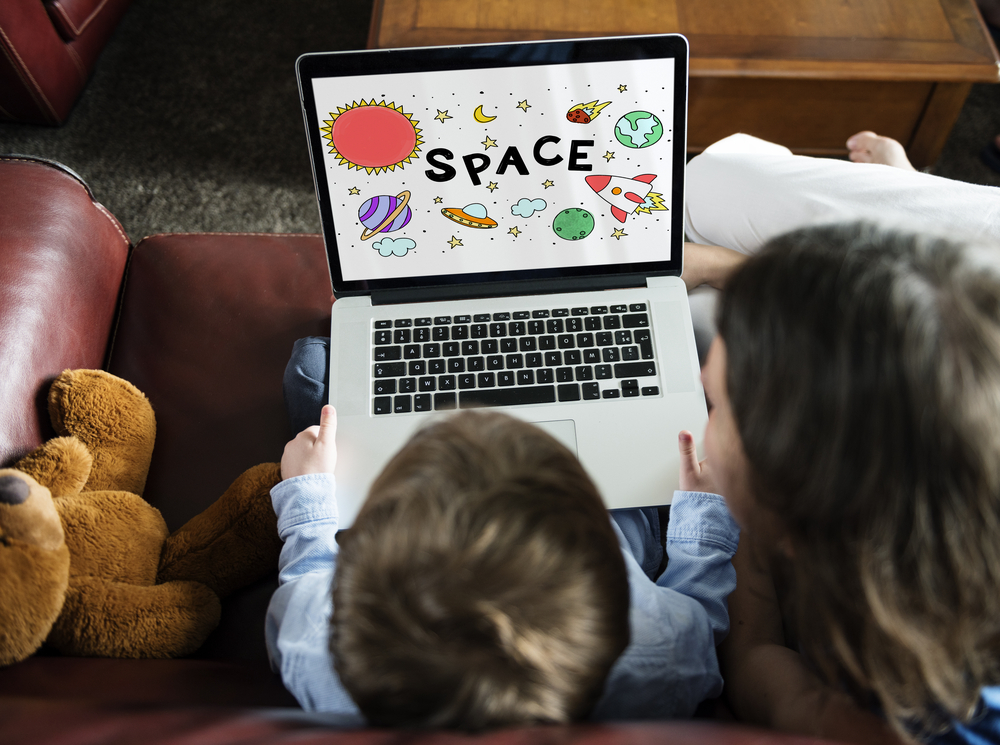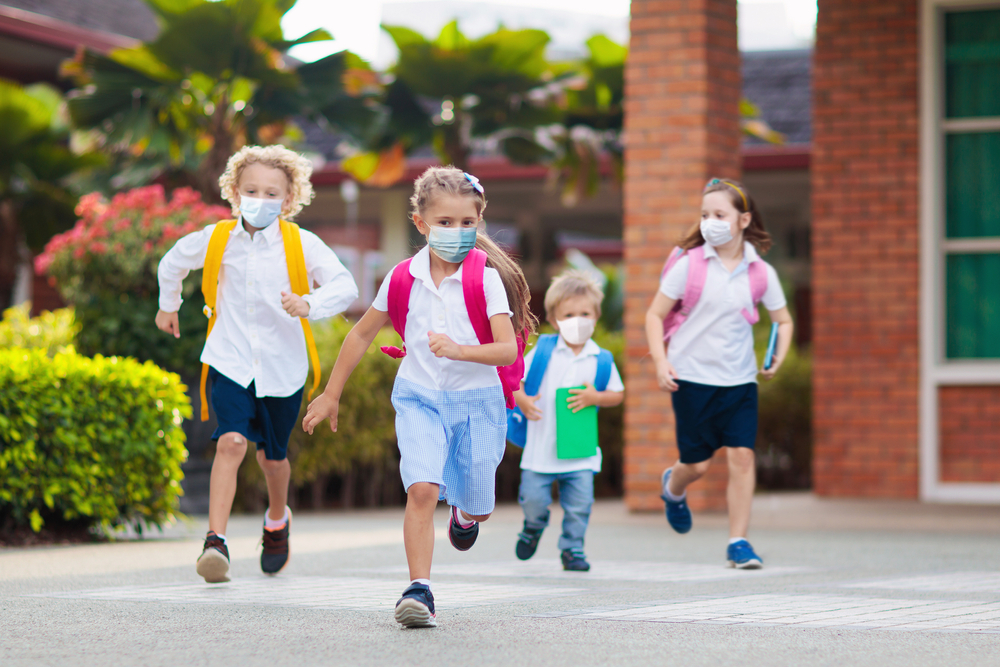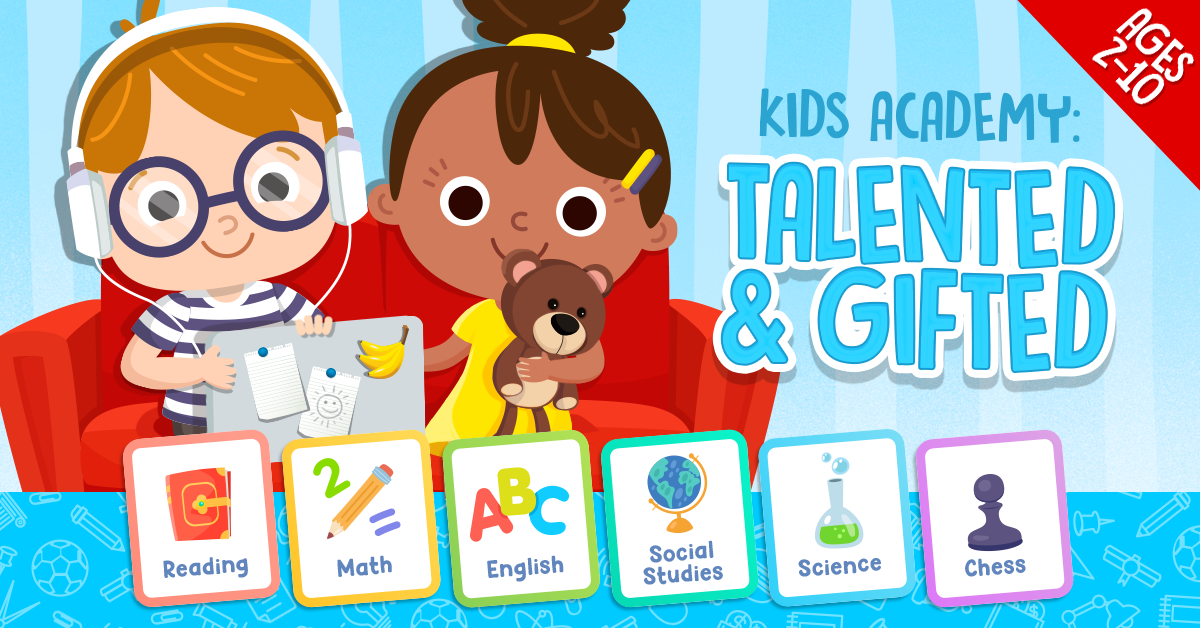Understanding ecosystems Worksheets for Ages 5-9
11 filtered results
-
From - To
Dive into the wonders of nature with our "Understanding Ecosystems" worksheets designed specifically for ages 5-9. Kids Academy offers engaging and educational printable activities that teach young learners about different ecosystems, their components, and how living things interact within them. Our worksheets provide visual aids and age-appropriate explanations to foster curiosity and environmental awareness. Perfect for classroom use or at-home learning, these worksheets will help children develop critical thinking, observation skills, and a love for the natural world. Explore a variety of ecosystems from forests to oceans, and watch your child’s understanding of the world bloom.
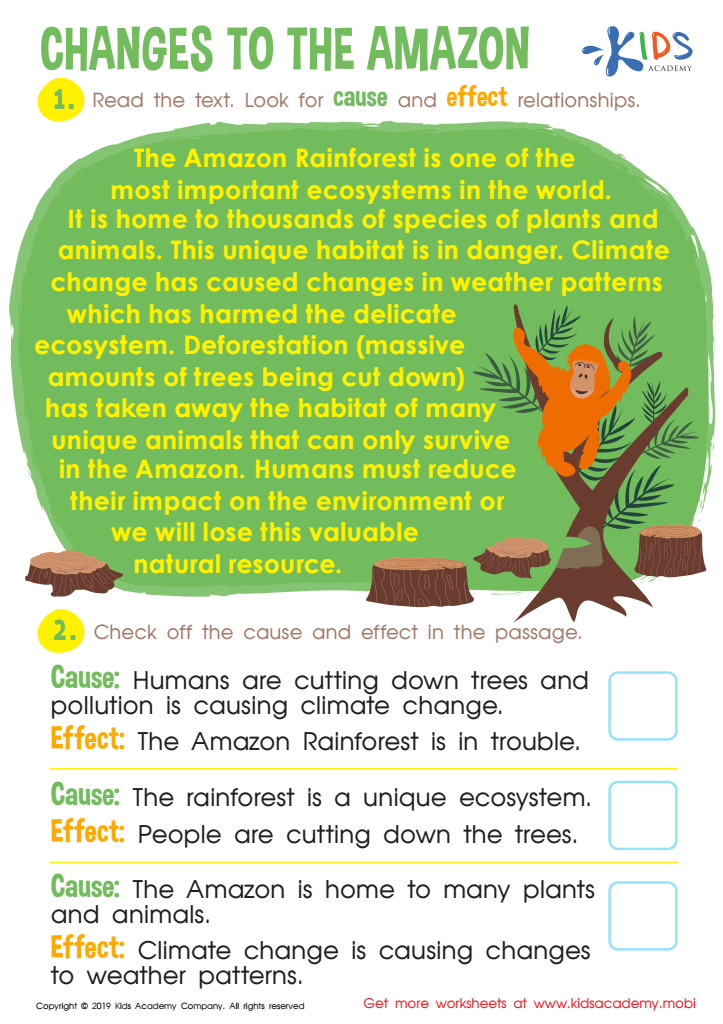

Changes to the Amazon Worksheet
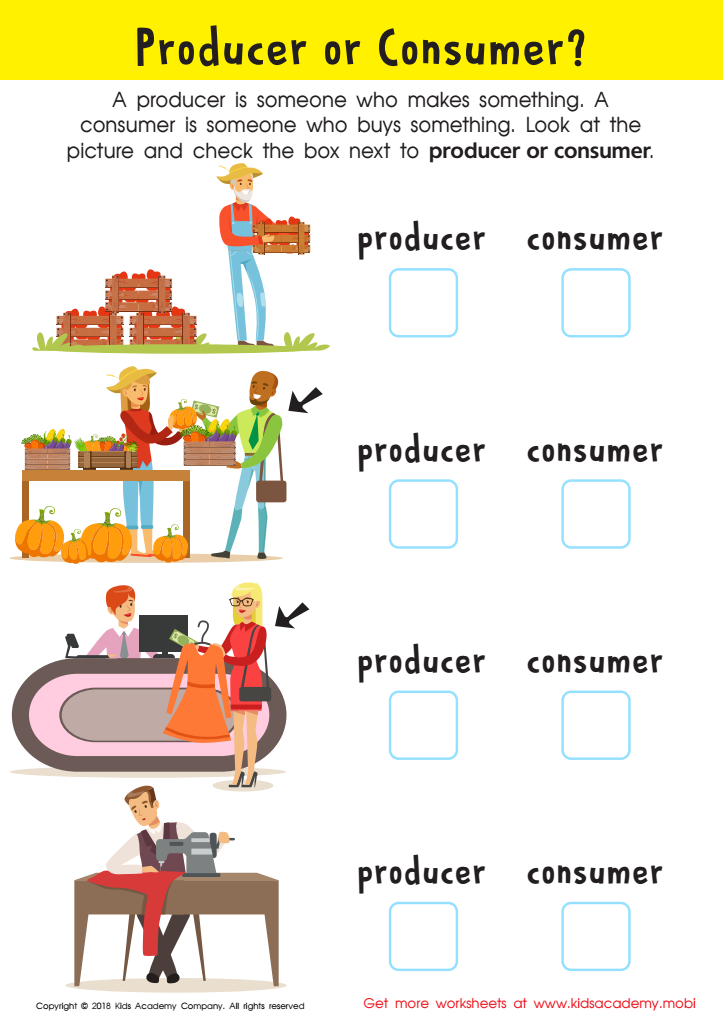

Producer or Consumer? Worksheet
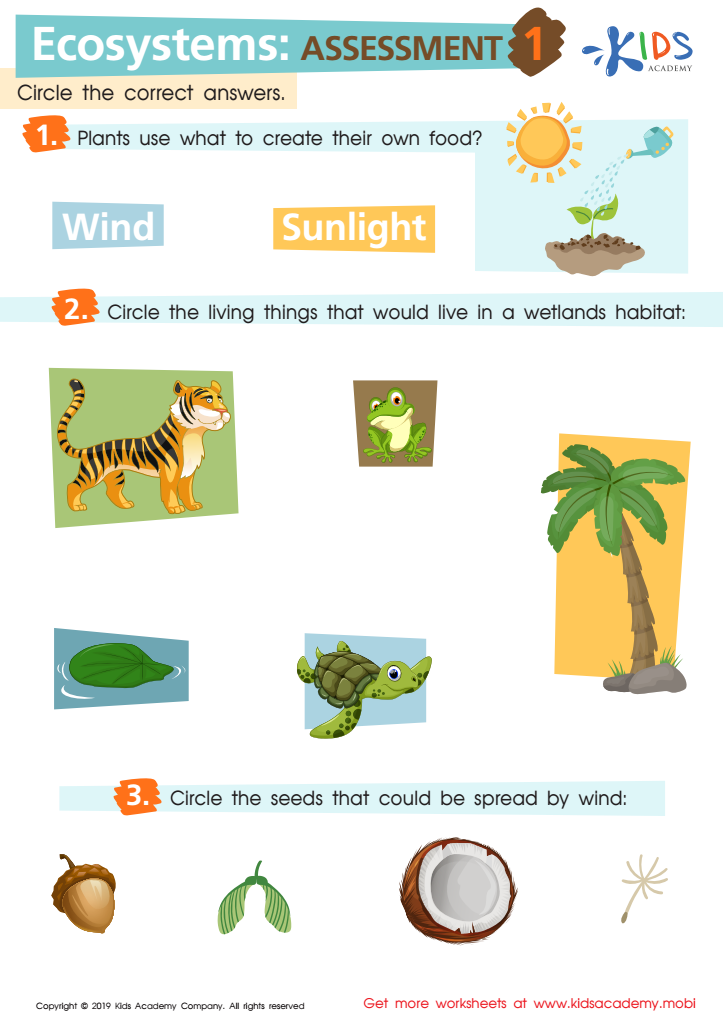

Ecosystems: Assessment 1 Worksheet
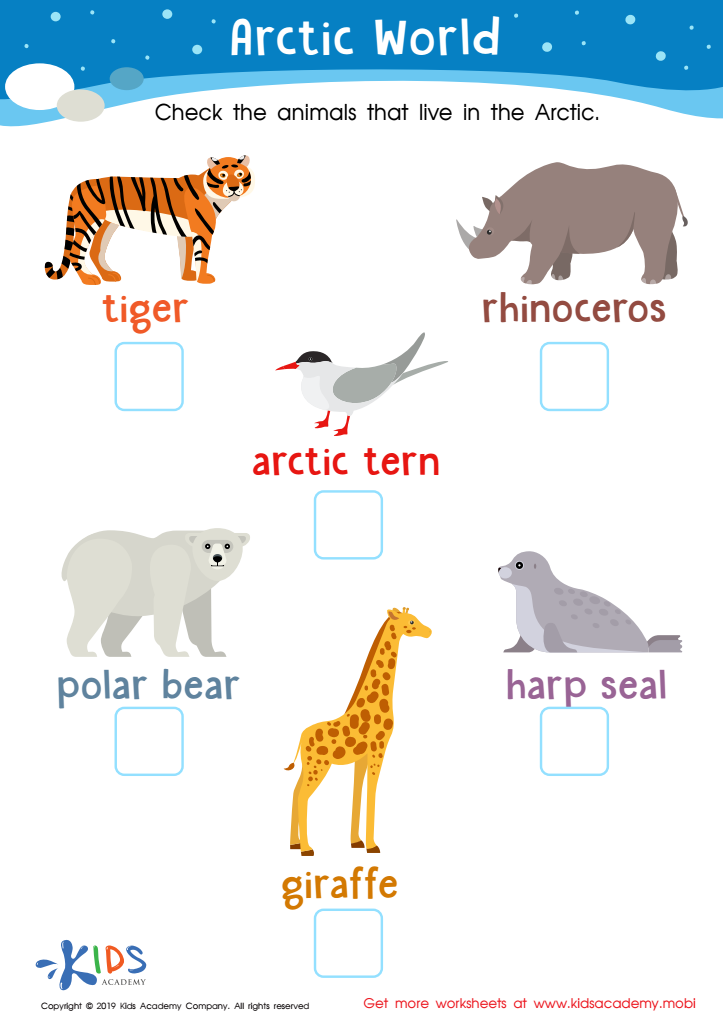

Arctic World Worksheet
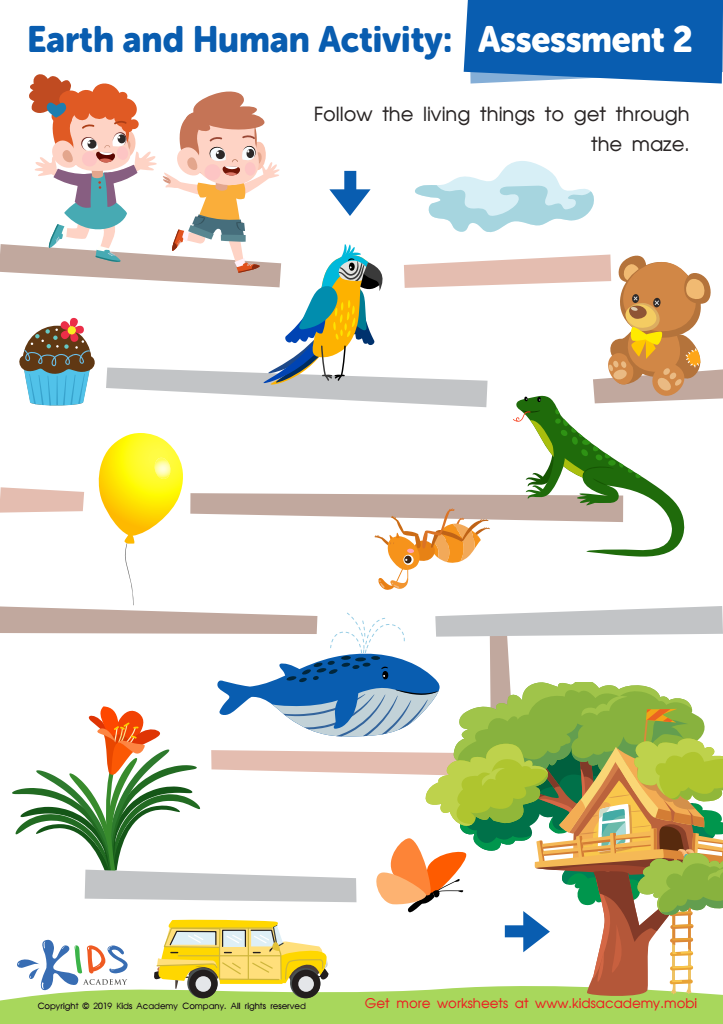

Earth and Human Activity: Assessment 2 Worksheet
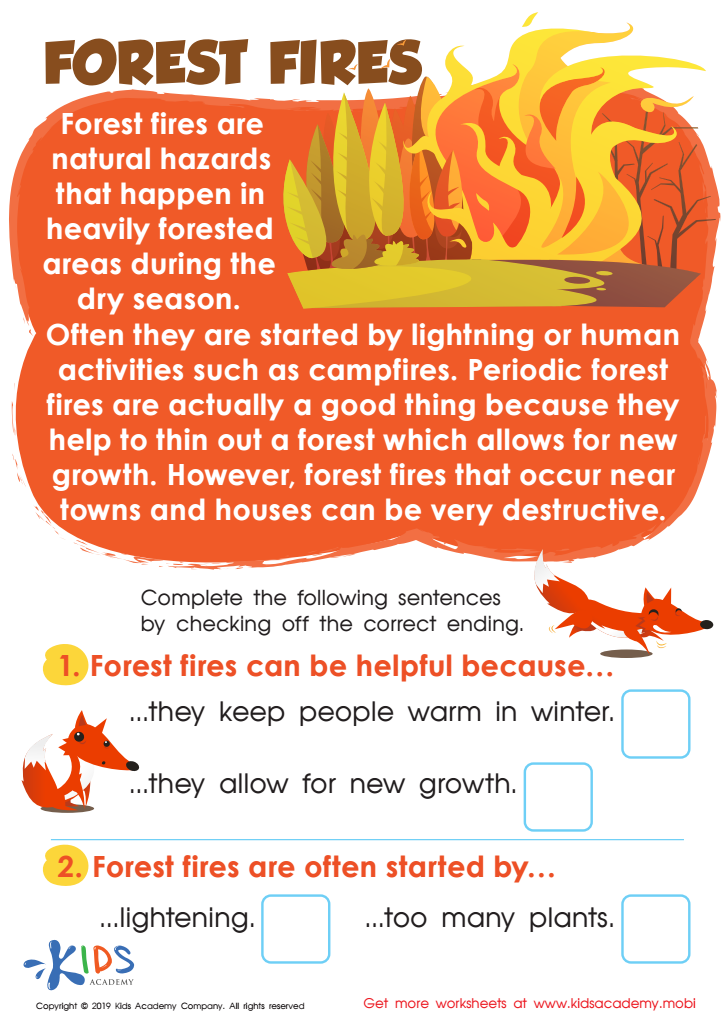

Forest Fires Worksheet
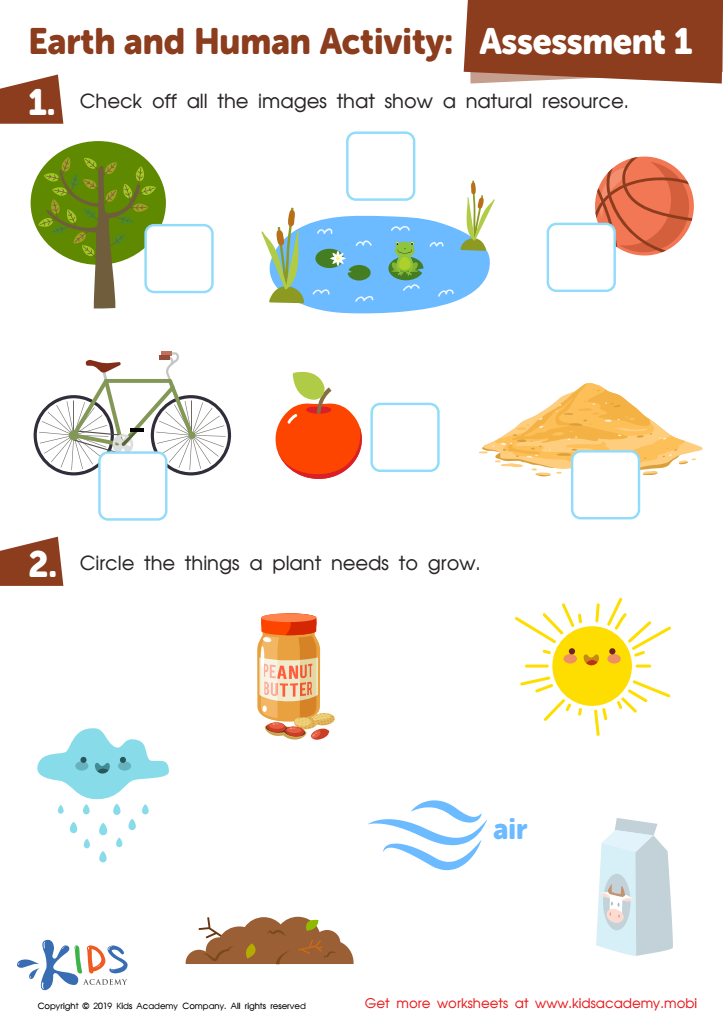

Earth and Human Activity: Assessment 1 Worksheet
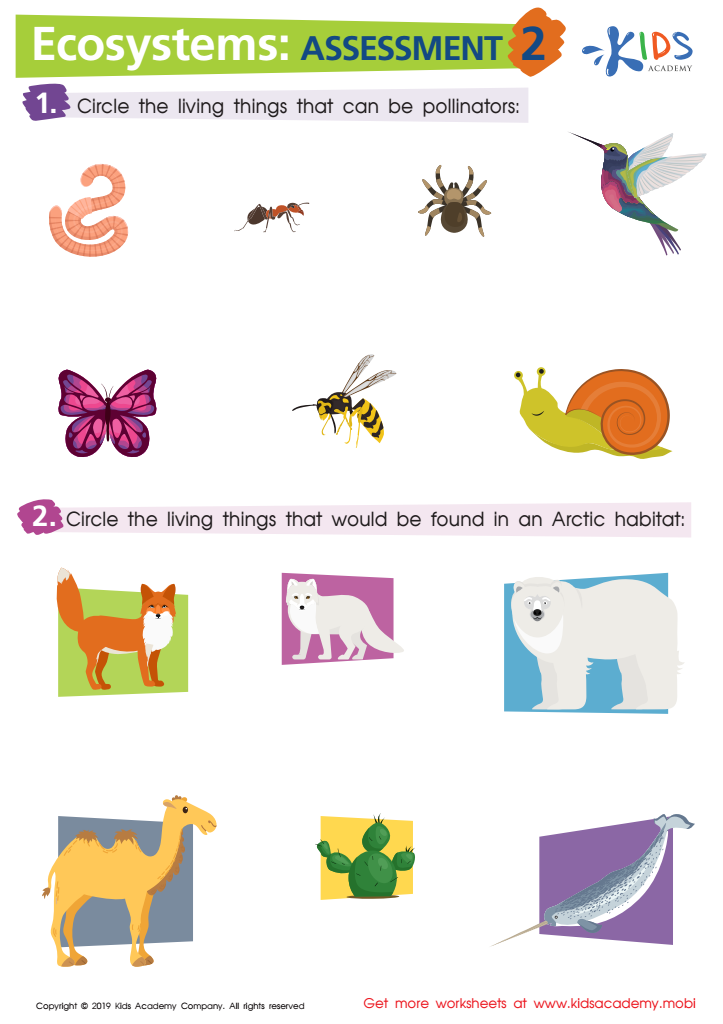

Ecosystems: Assessment 2 Worksheet
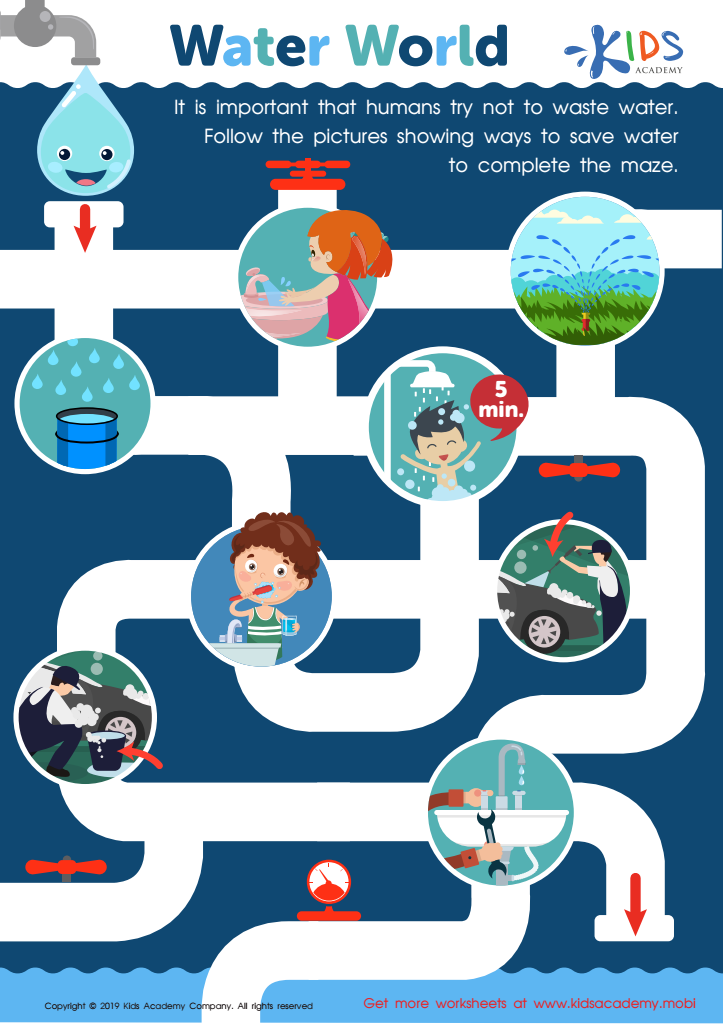

Water World Worksheet
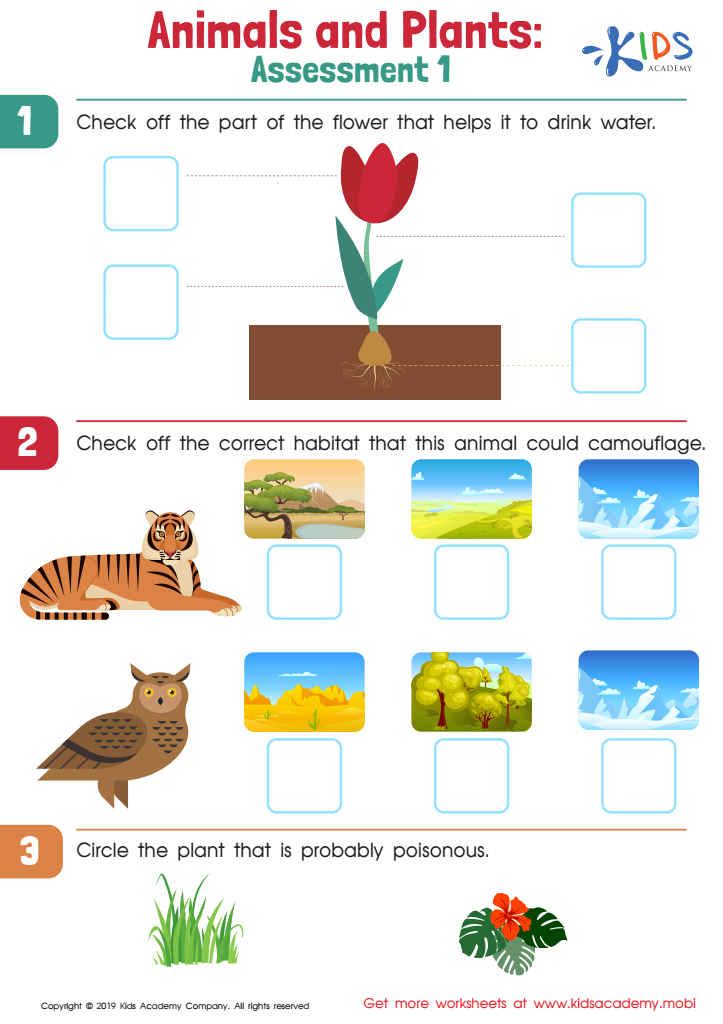

Animals and Plants: Assessment 1 Worksheet
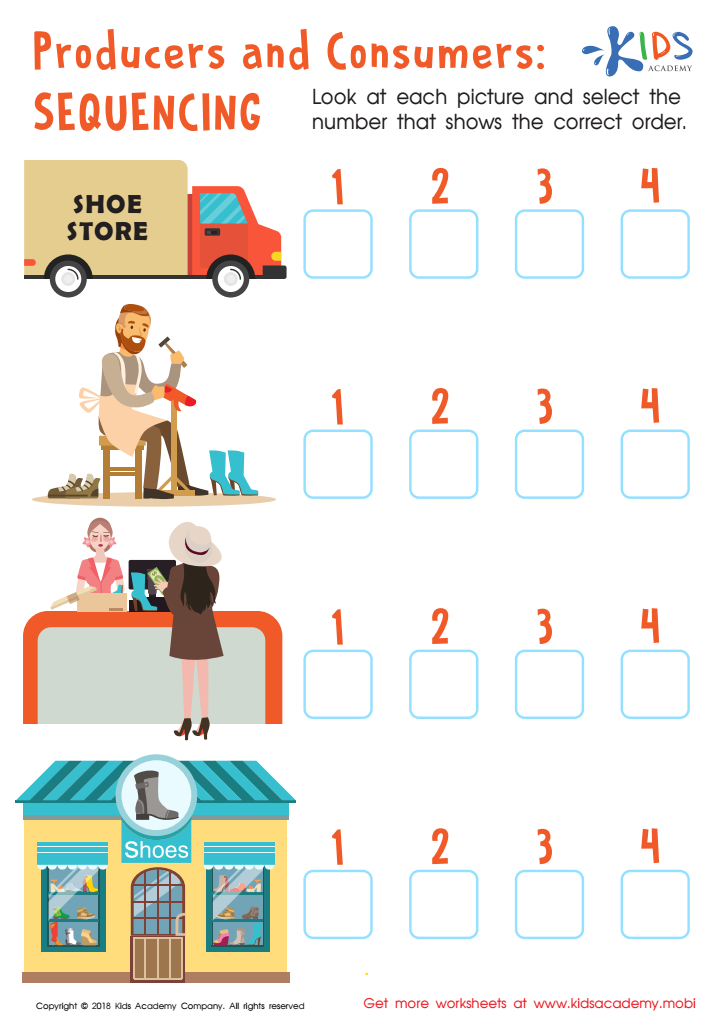

Producers and Consumers: Sequencing Worksheet
Understanding ecosystems is vital for children aged 5-9 because it helps them develop a foundation for appreciating and protecting the natural world. At this young age, kids are naturally curious and eager to learn about the environment. Teaching them about ecosystems unlocks a deeper understanding of how plants, animals, and other elements interact and depend on each other.
By learning about ecosystems, children gain important science skills such as observation, classification, and critical thinking. They start to see the importance of biodiversity, learning that every creature has a role in maintaining the balance of nature. This early education fosters a sense of environmental stewardship, encouraging behaviors like recycling, conserving water, and respecting wildlife.
Moreover, understanding ecosystems can enhance a child's creativity and empathy. They begin to imagine how different habitats function, leading to a greater appreciation for both familiar and unfamiliar organisms. It becomes second nature for them to consider the consequences of human actions on natural habitats.
For parents and teachers, introducing children to ecosystems aligns with broader educational goals. It nurtures a child’s curiosity for science and aligns with classroom standards in biology and environmental science, setting a foundation for more advanced learning. In short, understanding ecosystems equips kids with knowledge, values, and skills they will use throughout their lives.
 Assign to My Students
Assign to My Students






